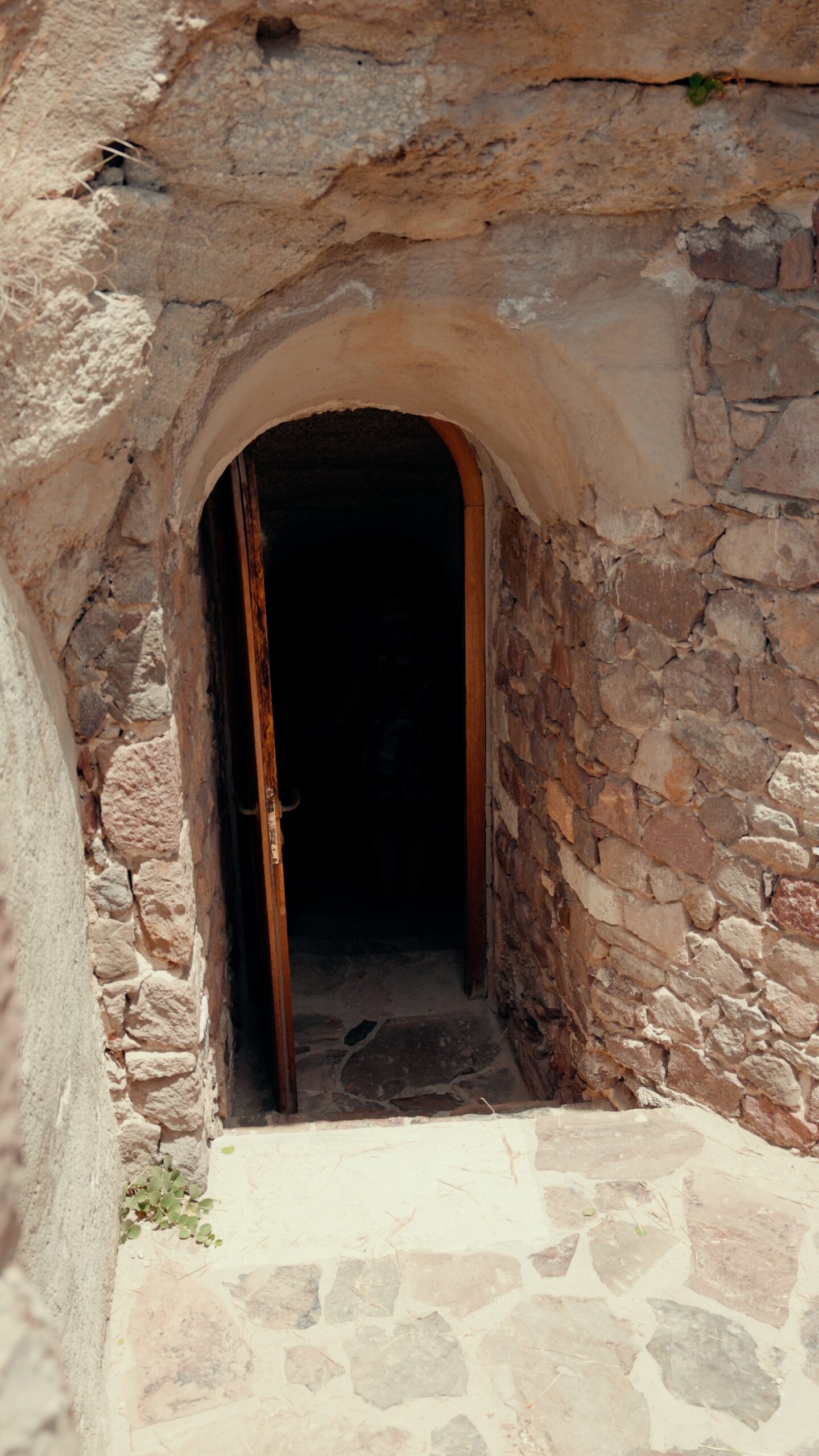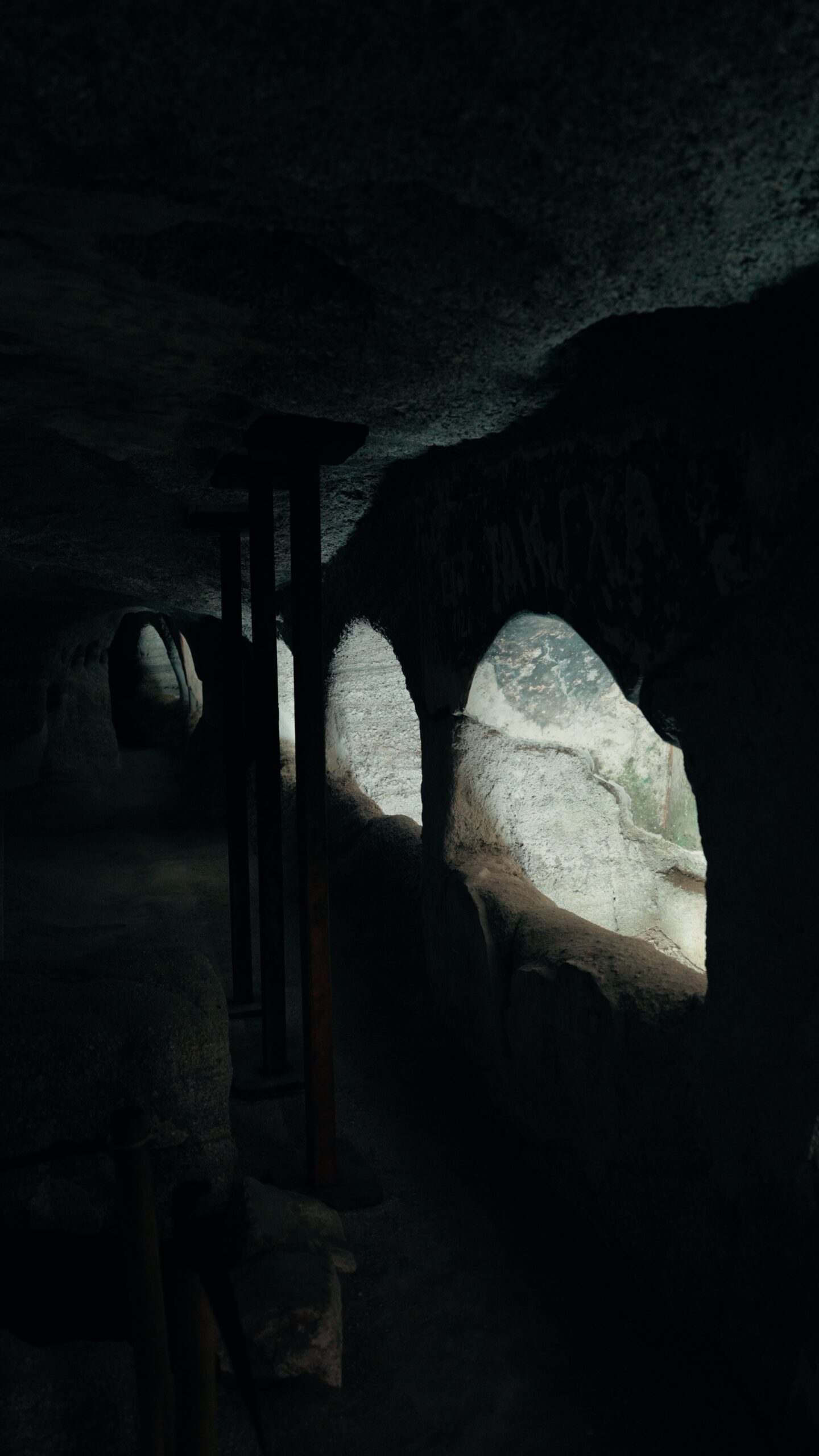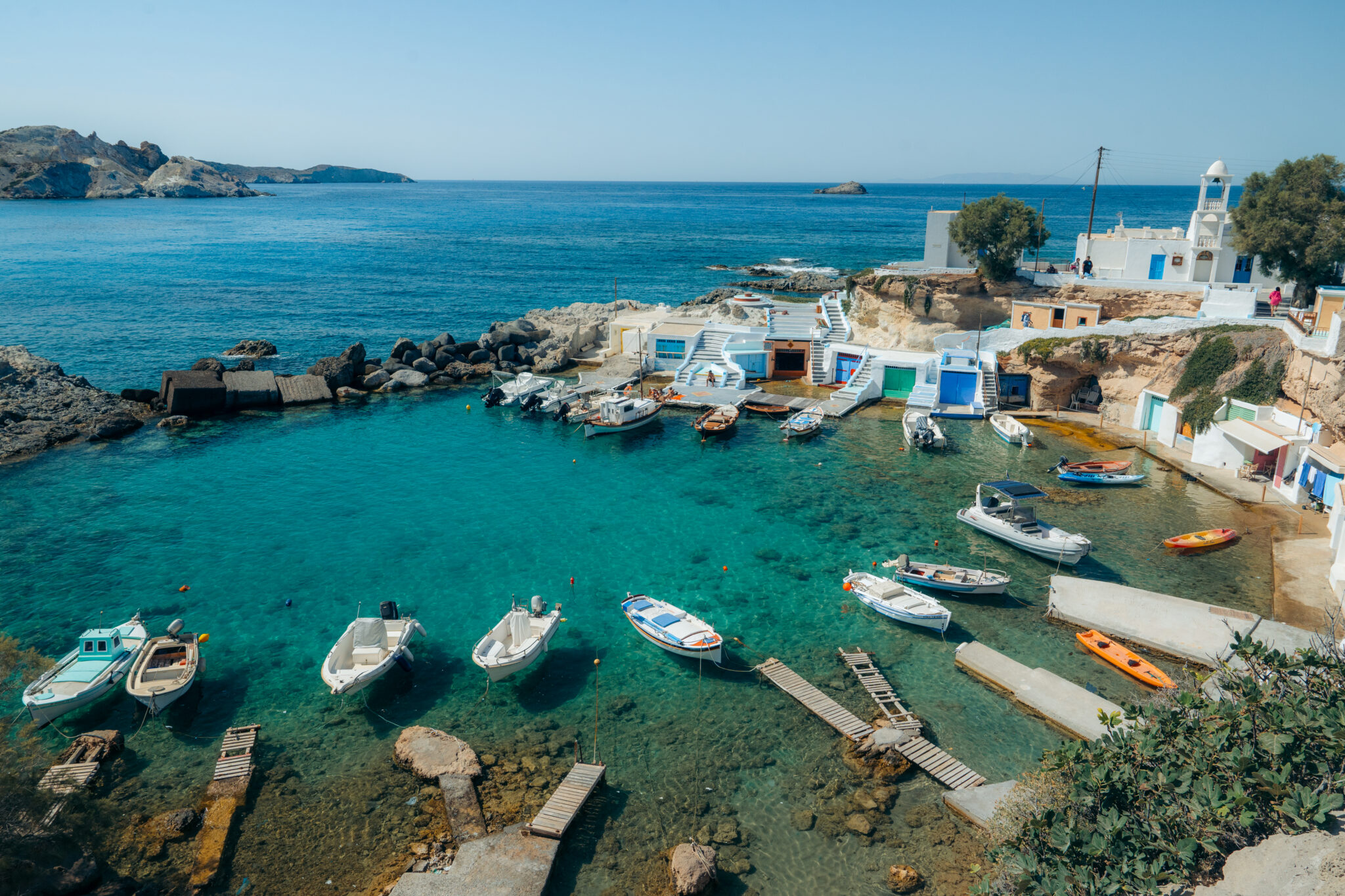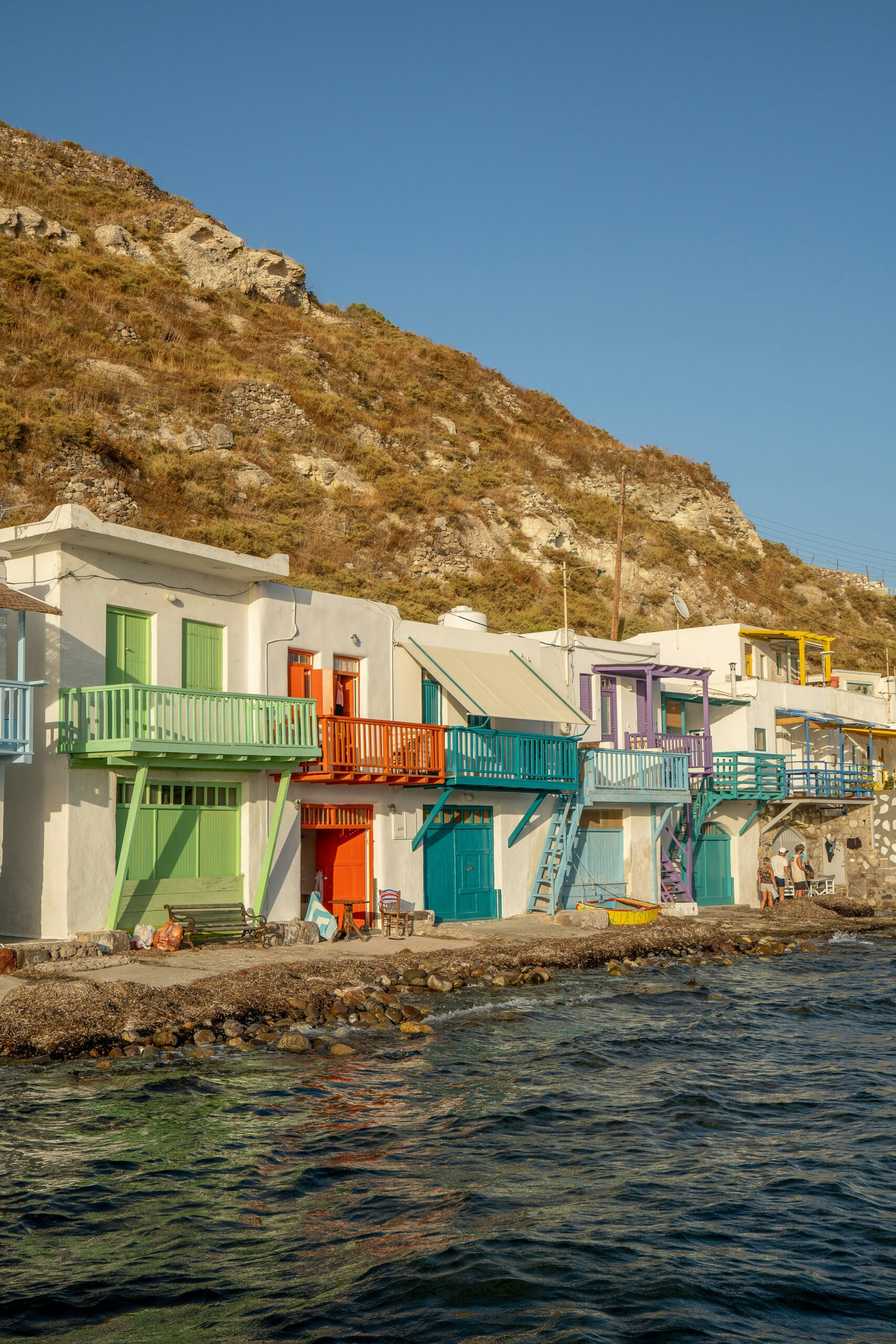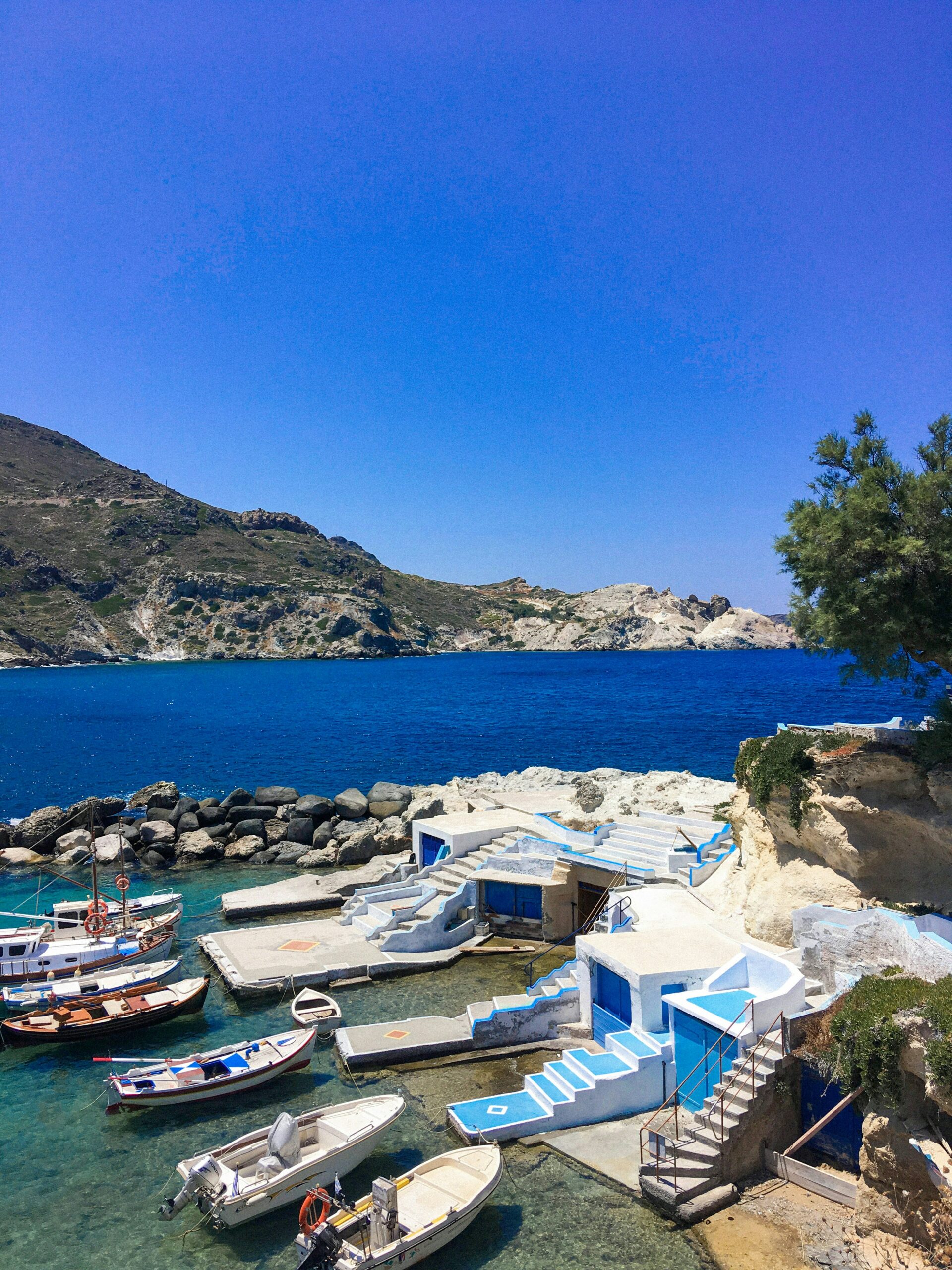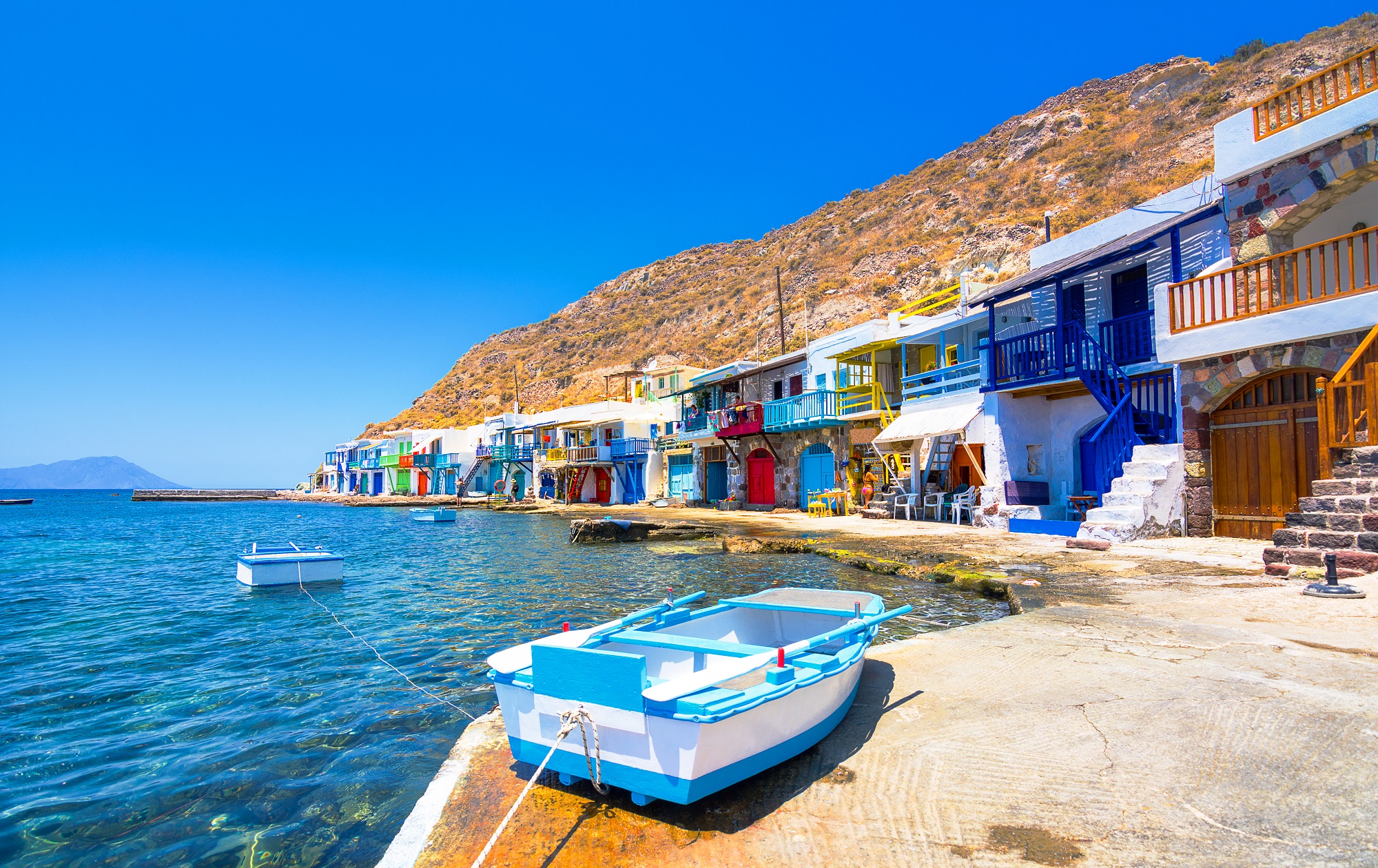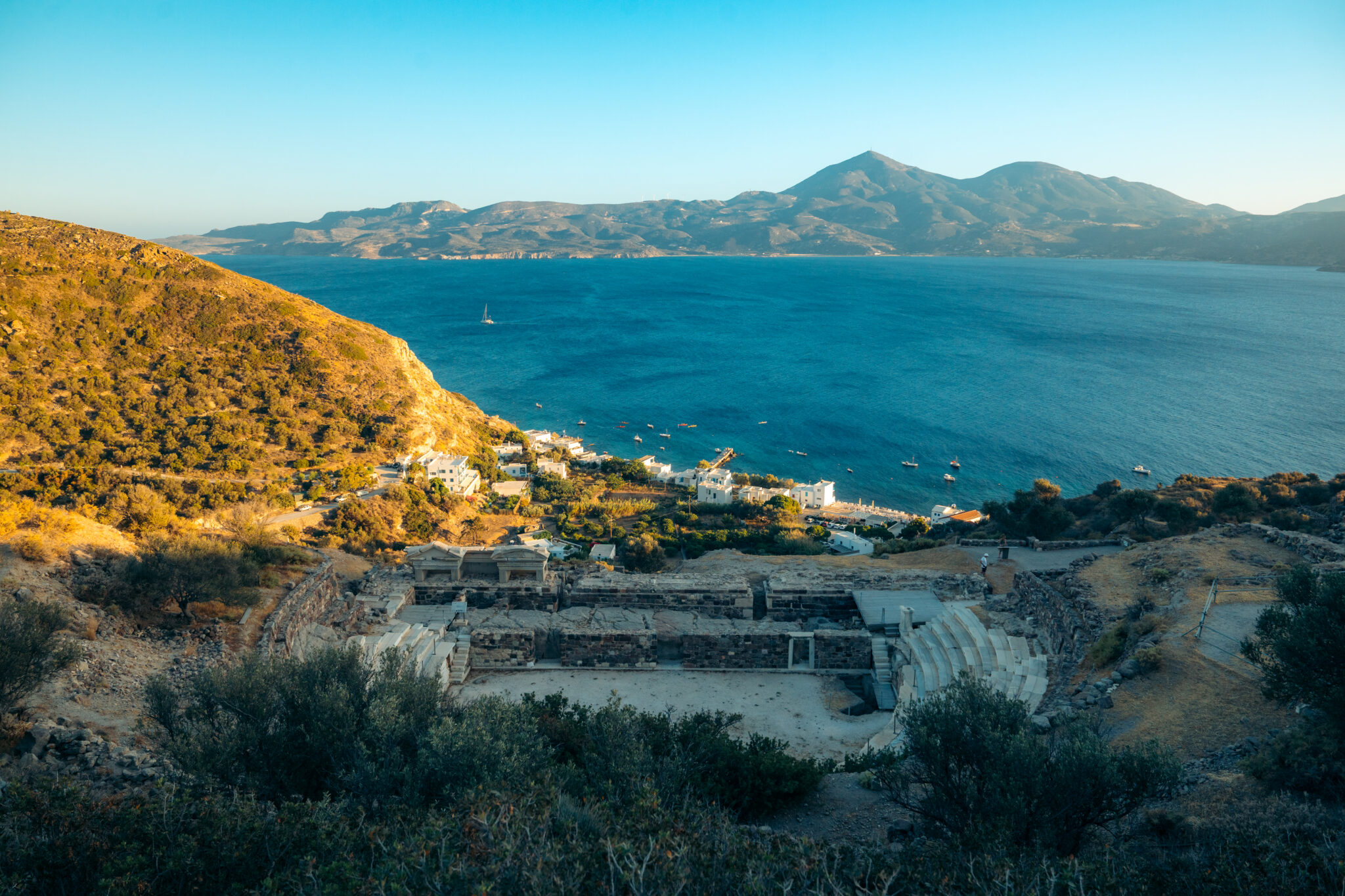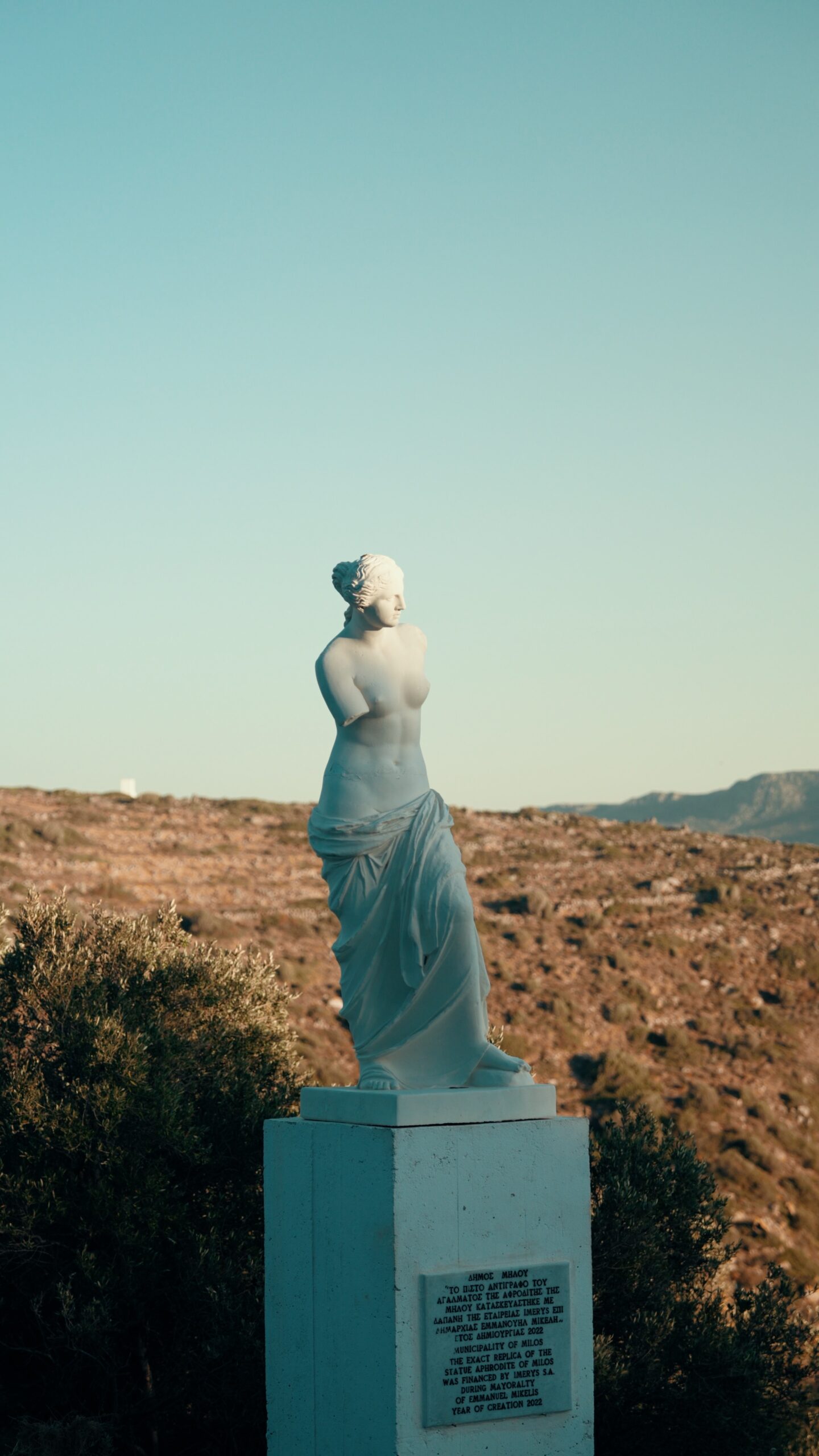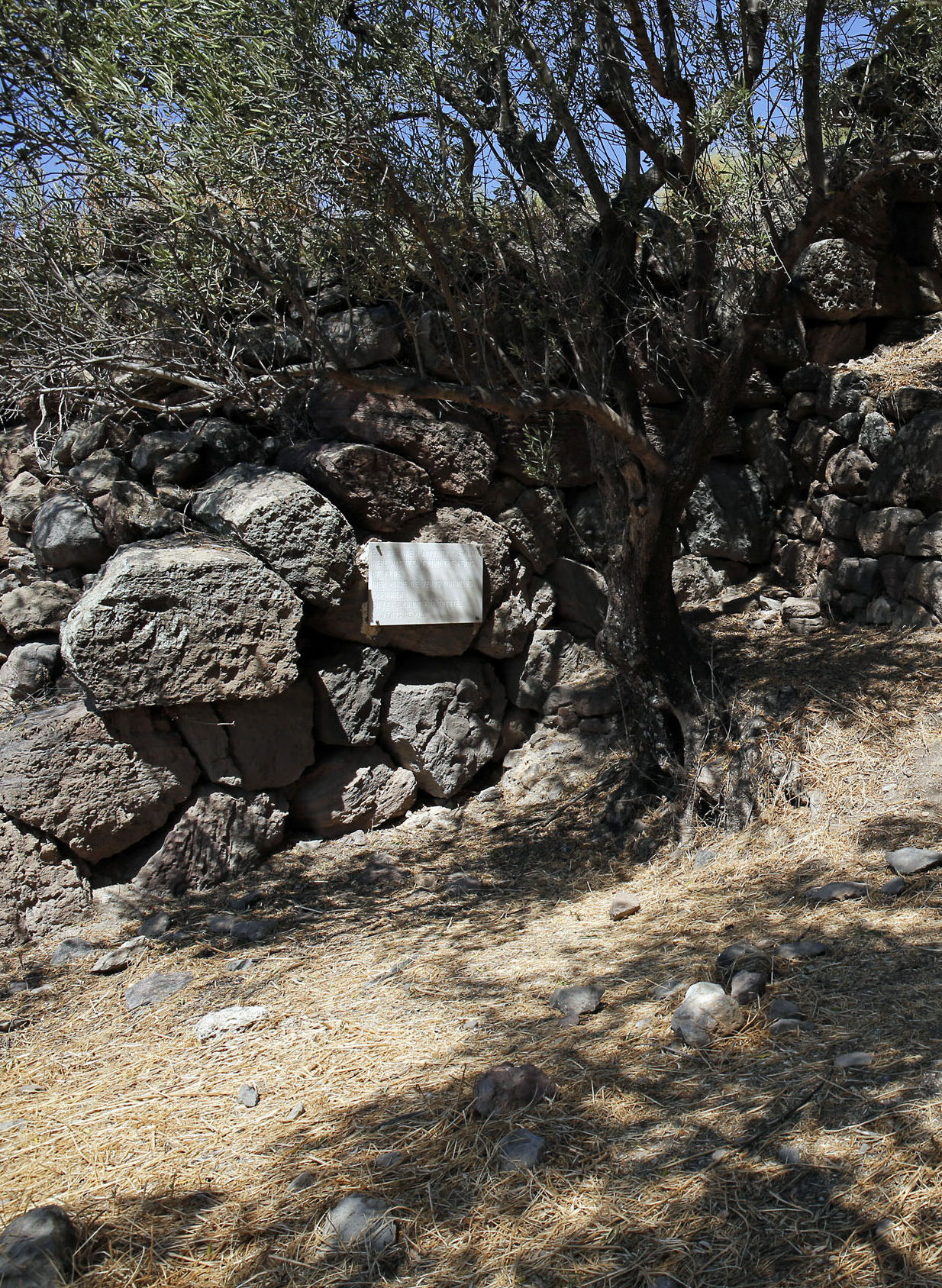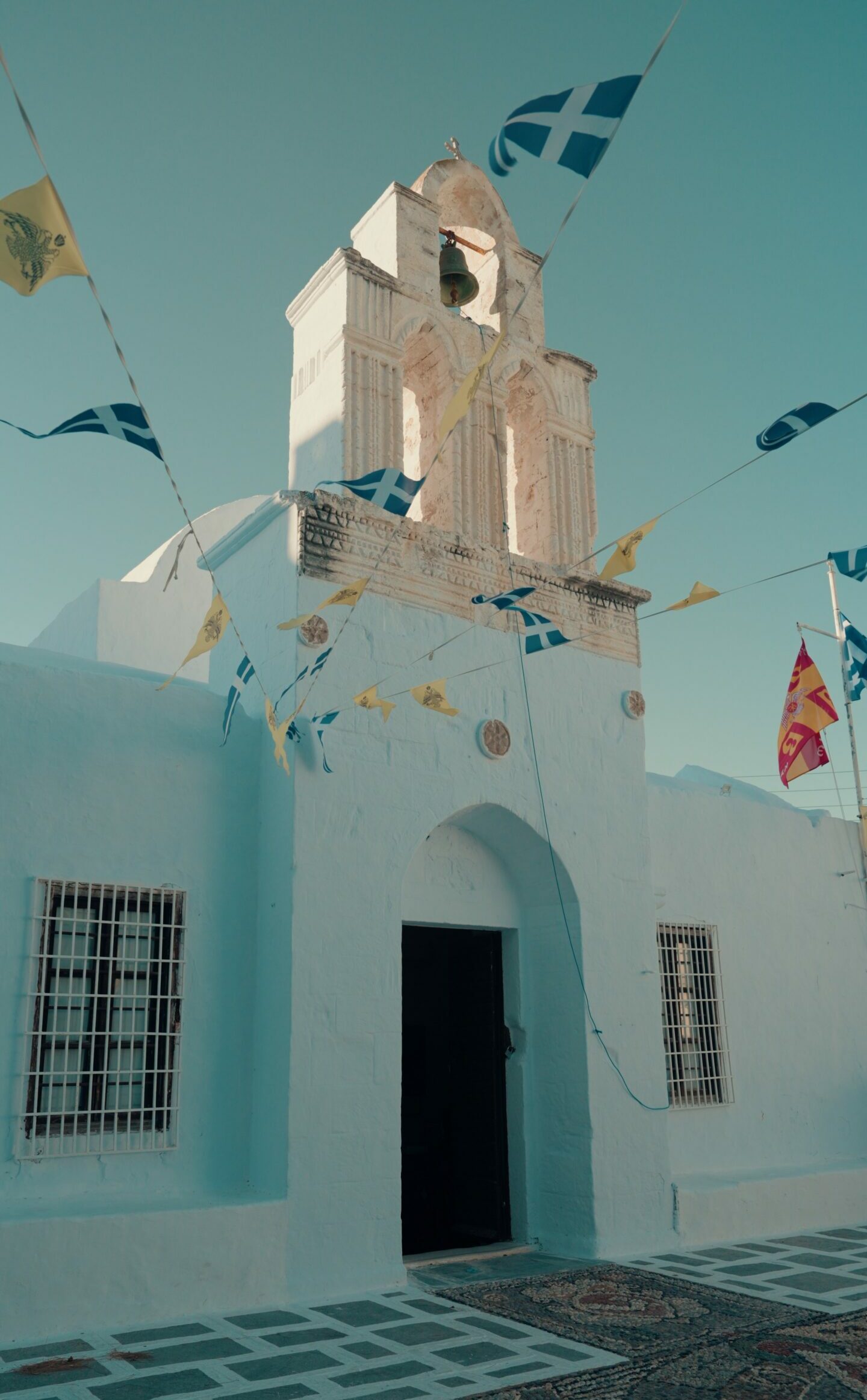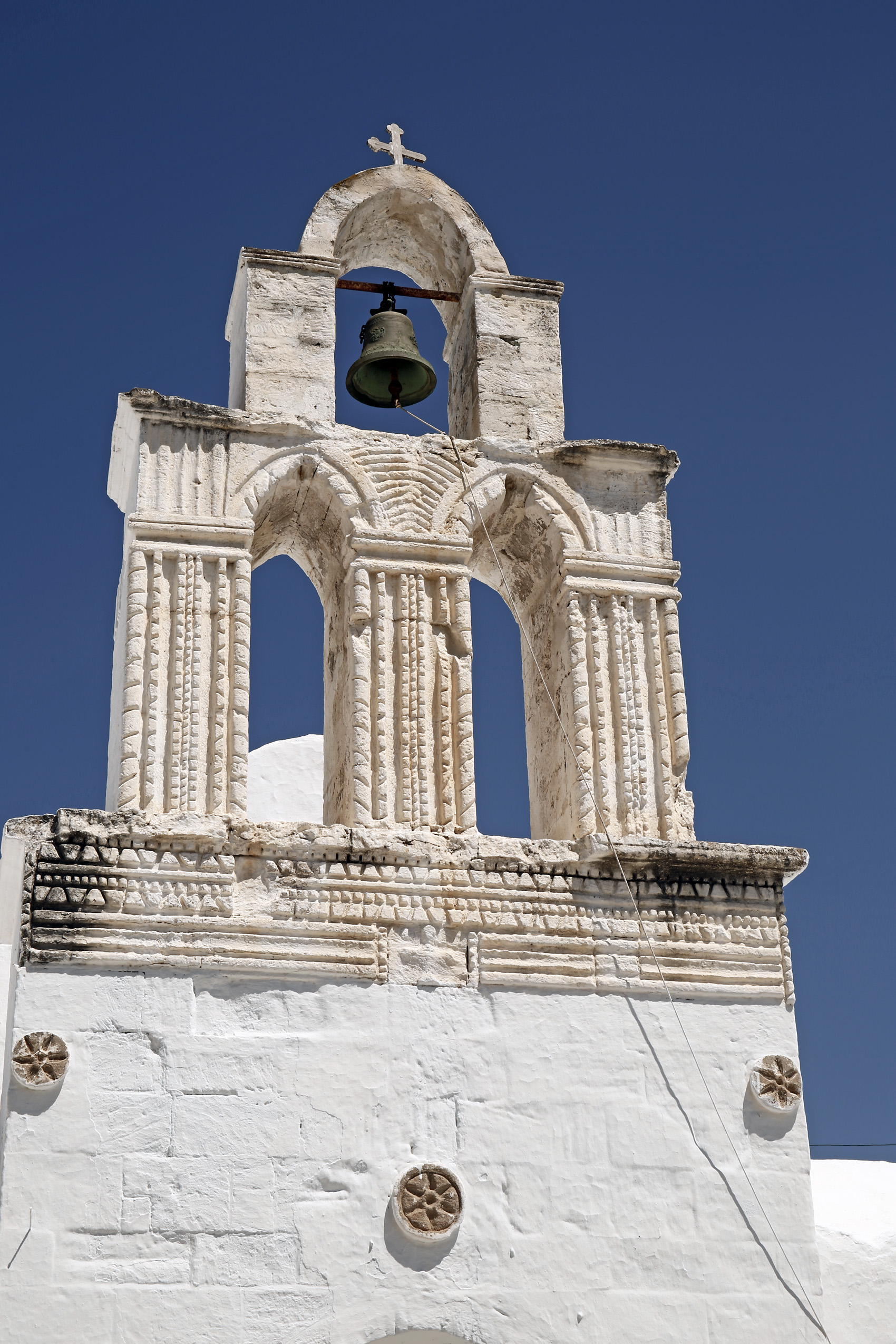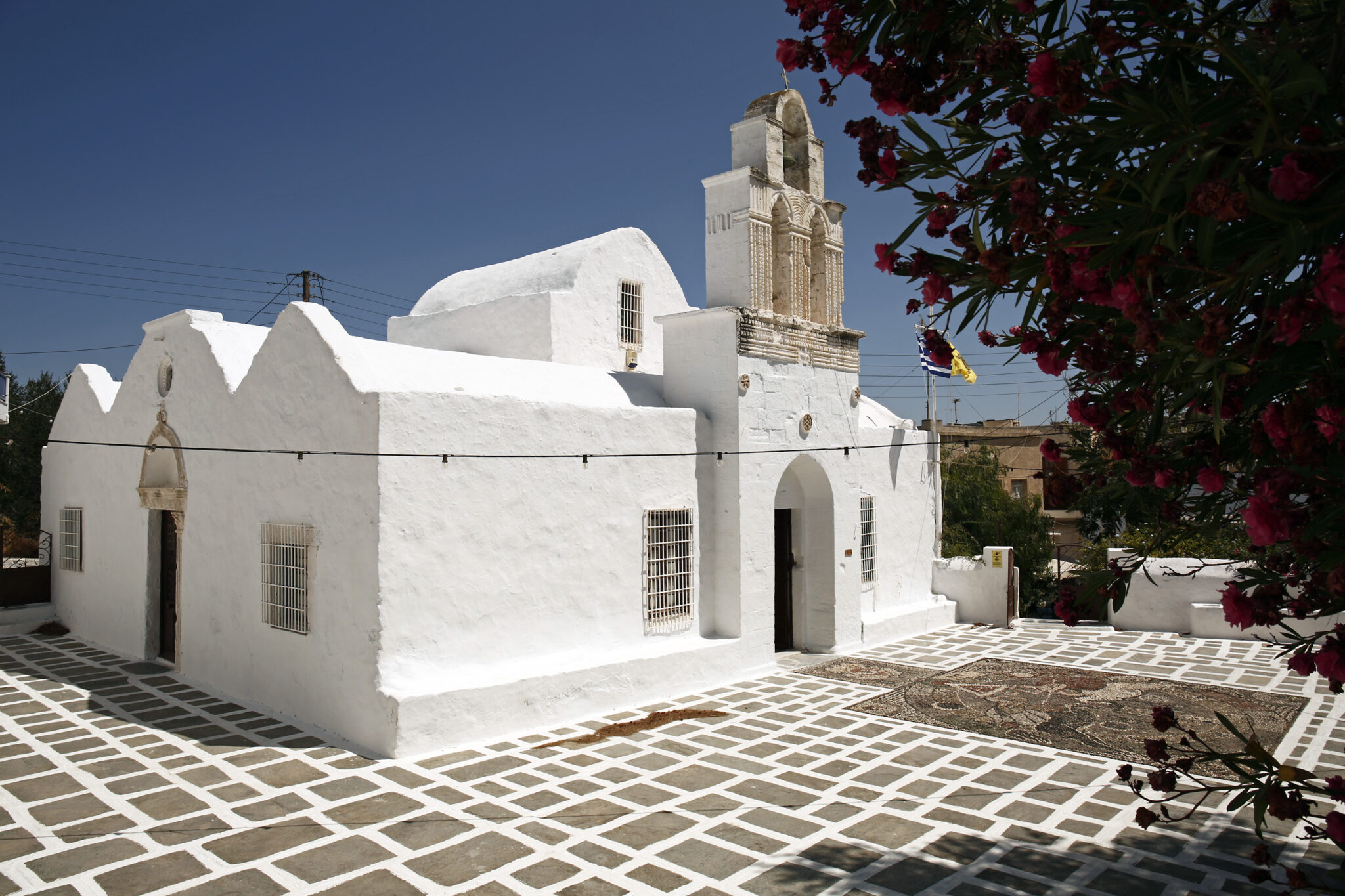Milos, a Cycladic gem, offers a blend of historical treasures and scenic beauty. The atmospheric Catacombs of Trypiti echo with early Christian history, while the charming fishing village of Klima showcases traditional island life. Near where the celebrated Venus de Milo was unearthed, a Roman Theater stands as a reminder of the island’s ancient past. In Adamas, the Ecclesiastical Museum at the Holy Trinity houses a remarkable collection of religious art. Join us as we explore the rich history and enduring significance of Milos’ most compelling landmarks, each revealing a unique chapter of this captivating Greek island.
The Catacombs of Trypiti
As you leave behind the blinding Cycladic light and descend below ground level, you will find yourself in a different world. The only sounds are the hushed voices of visitors, and the evocative lighting adds to the solemn atmosphere. The catacombs consist of a network of three large underground galleries, passageways, and a burial chamber stretching 184 meters. Along the sides of the galleries, 291 carved arches (arcosolia) were found, containing tombs as well as burials on the floors. They date from the 1st to the 5th century AD. In some arcosolia, faded traces of inscriptions and designs can still be seen, including Christograms and epigraphs. At the center of the first chamber lies a raised tomb, the “Table of Martyrdom” (Mensa Martyrum), indicating that this space was not only a cemetery but also a place of worship.
The catacombs of Milos were accidentally discovered in 1840 and were first studied by Ludwig Ross, a Bavarian professor at the University of Athens, in 1844, who found that they had already been looted. Further research was conducted in the early 20th century by Georgios Lambrakis and historian Georgios Sotiriou. According to Ross, there were a total of 1,500–2,000 tombs in the area, with 8,000 burials. Carved into volcanic material, the catacombs are one of Milos’s most significant attractions, drawing thousands of visitors each year. This early Christian monument has gained international recognition, as it is considered the third largest of its kind after those in the Holy Land and Rome.
Klima
Sculpted into the volcanic rock of the island, the ‘syrmata’ were spaces where locals stored their wooden boats during the winter to protect them from the sea and wind. They got their name from the thick ropes (“syrmata”) used to haul the boats into the dugout shelters, whose front parts were built. Some of these housings also had upper floors where the owners could stay while repairing, maintaining, and painting their boats.
“Syrmata” can still be found in the tiny seaside fishing villages of Milos, such as Mandrakia and Fyropotamos, but in Klima, this improvised form of folk architecture captivates visitors, who take countless photos.
Together with Kleftiko and Sarakiniko, Klima stars in the images that advertise Milos. Some call it “Little Venice,” while Conde Nast has ranked it among the most beautiful villages in Greece. The two-story houses are striking with their bright colors, and the large doors are left open, allowing anyone to see inside.
Crowded together side by side, right by the water’s edge, which at high tide reaches their thresholds, the “syrmata” are used as vacation homes by locals or rented out to tourists who want to experience this authentic side of island life. As you stroll around, you will feel as if you are becoming part of this small community, where people live outdoors, sorting vegetables and cleaning fish, playing backgammon, and enjoying ouzo with friends. And they wait for sunset when the heat fades and the sun’s rays take on orange hues, gently caressing Klima and the boats bobbing lazily in the water.
The Roman Theater and the Venus de Milo
In the area where the ancient city of Milos once stood, in a beautiful location overlooking Klima, Trypiti, and the open sea, you can admire the theater, believed to have been built during the Hellenistic period. It was reconstructed during the Roman era and excavated by Bavarian architect Karl Haller von Hallerstein in 1817.
Of the seating area, which was shaped like a horseshoe, only seven tiers remain, accommodating around 700 spectators. However, it is believed that it could once hold up to ten times that number. Foundations and numerous architectural elements from the stage, which exhibit exceptional craftsmanship and reflect influences from Asia Minor reminiscent of the Theater of Ephesus, have been found.
Near the theater, it is said that a cave existed in which a farmer discovered the famous Venus de Milo on April 8, 1820. After many adventures, the renowned statue was transported to France where it has been admired by millions since 1821 in the Louvre Museum. A plaster replica can be seen at the Archaeological Museum of Milos, located in Plaka.
The Venus de Milo, sculpted from Parian marble and dated between 150 and 120 BC, was found in pieces, though its arms and the sculptor’s name on the base are still missing. The statue stands 2.2 meters tall and weighs 900 kilograms. The goddess is depicted nude from the waist up, with the lower half of her body draped in a delicate garment. There are numerous theories about what she may have held in her hands, with most agreeing that it was an apple, which, according to mythology, was given to Aphrodite by Paris.
The Ecclesiastical Museum of Adamas
Housed in the Church of the Holy Trinity, the Panagia Theophani, the Ecclesiastical Museum is a site of great architectural and historical significance, retaining elements from reconstructions and repairs over various historical periods—Byzantine, Frankish, Ottoman, and into the 19th century. Scholars believe the church took its original form before the Iconoclasm, which is why, along with the Church of Panagia tou Kipou, it is considered one of the oldest on the island. It was destroyed and rebuilt after 1207 to serve as the main church of a Catholic monastery. Later, it became an Orthodox monastery and was renamed Panagia Theophani, a name it held until 1824 when it was purchased by Cretans.
The Church of the Holy Trinity is built in the rare style of a “three-aisled, barrel-vaulted church with a domed chamber.” The other two aisles are dedicated to Saint Nicholas and Saint Athanasios. The Ecclesiastical Museum was established in 2000, displaying exhibits primarily sourced from the abandoned churches of the old capital of Milos, Zephyria. The collection includes icons from the 15th century onward, with notable works from the 17th century by iconographers Emmanouil and Antonios Skordilis. The oldest is a 14th-century Descent from the Cross, located in the aisle of Saint Athanasios. Visitors can also admire ecclesiastical vessels and furniture, parts of the iconostasis from the Church of Christ in Zephyria, jewelry, votive offerings from emigrants to Russia from Adamas, and more.
In an adjacent room, since 2007, there has been an exhibition of black-and-white photographs and drawings of the catacombs of Milos. In the courtyard, you can see allegorical mosaics created in 1932.




